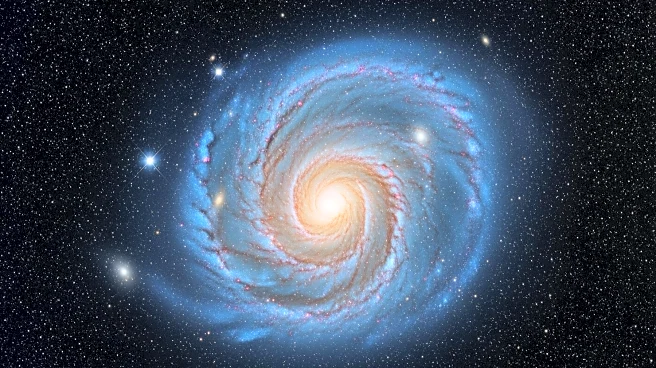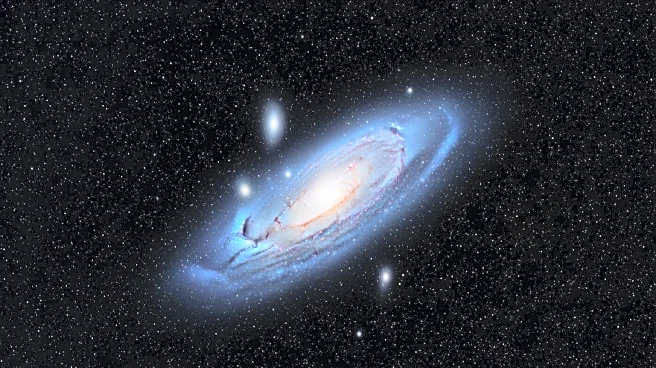What's Happening?
Researchers at the RIKEN Center for Interdisciplinary Theoretical and Mathematical Sciences in Japan, in collaboration with The University of Tokyo and Universitat de Barcelona, have created a groundbreaking
simulation of the Milky Way. This simulation tracks over 100 billion individual stars across 10,000 years of evolution, utilizing artificial intelligence (AI) and advanced numerical simulation techniques. The model represents a significant leap forward, containing 100 times more stars than previous simulations and achieving this with remarkable speed. The development was presented at the international supercomputing conference SC '25, highlighting its potential impact on astrophysics, high-performance computing, and AI-assisted modeling. The simulation's ability to model individual stars allows for more accurate comparisons of galactic evolution theories with observational data, overcoming previous limitations in simulating large galaxies like the Milky Way.
Why It's Important?
This advancement in simulating the Milky Way has profound implications for astrophysics and computational science. By accurately modeling individual stars, researchers can gain deeper insights into galactic evolution, structure, and star formation. The AI-driven approach not only enhances the precision of simulations but also significantly reduces the time required to simulate long periods of galactic activity. This breakthrough could extend beyond astrophysics, offering potential applications in climate, weather, and ocean modeling, where similar challenges of linking small-scale physics with large-scale behavior exist. The integration of AI with high-performance computing represents a fundamental shift in tackling complex, multi-scale problems, potentially accelerating scientific discovery across various fields.
What's Next?
The successful implementation of AI in simulating the Milky Way opens the door for further exploration in other areas of computational science. Researchers may apply this hybrid AI approach to enhance simulations in meteorology, oceanography, and climate modeling, addressing similar challenges in these fields. The method's ability to accelerate complex simulations could lead to more efficient and accurate models, aiding in the understanding of environmental and atmospheric phenomena. As AI continues to evolve, its role in scientific discovery and modeling is likely to expand, offering new tools and methodologies for researchers across disciplines.
Beyond the Headlines
The integration of AI into astrophysical simulations not only advances scientific understanding but also raises questions about the ethical and practical implications of AI in research. As AI becomes a more prominent tool in scientific discovery, considerations around data privacy, algorithmic transparency, and the potential for AI-driven biases must be addressed. Additionally, the energy consumption associated with large-scale simulations poses environmental concerns, prompting discussions on sustainable computing practices. The long-term impact of AI on scientific methodologies and the balance between human and machine-driven research will continue to be a topic of interest.











